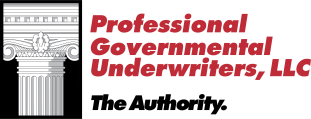The Makings of an Active Shooter Safety Action Plan

Are Your Clients Covered for Active Shooter Incidents?
June 4, 2018
The Benefits of an Active Shooter Risk Assessment
June 18, 2018The Makings of an Active Shooter Safety Action Plan
Active shooter incidents have resulted in hundreds of deaths and thousands of injuries over the past decade. These incidents are on the rise in the United States, with experts suggesting they will continue to devastate for years to come. Active shooter incidents also carry a heavy financial burden to the businesses and organizations affected by them; it is estimated that such incidents cost $229 billion annually in direct and indirect expenses.
What if you or your business were to face an active shooter? What would you do to protect yourself and your financial interests? Having an active shooter safety action plan in place before an event occurs can provide peace of mind and lay the groundwork for minimizing risks associated with these incidents.
Run, Hide, Fight
Before delving into the preparation of an active shooter safety action plan, it is important to understand what to do if one should find themselves in a shooting event. During an active shooting, RUN, HIDE, FIGHT.
- RUN to escape if possible – evacuating the area and getting away from the shooter is of the highest priority.
- HIDE if escape is not possible – close and lock doors, stay quiet, and stay out of sight of the shooter or shooters if you cannot run away.
- FIGHT only as a last resort – if escape and hiding are not possible, the last step is to fight the shooter. Band together with others to ambush the shooter, and commit to your actions to disable the attacker(s).
Active Shooter Safety Action Plan
There are several steps involved in creating an active shooter safety plan. The first step is to assemble a group of stakeholders representing a cross-section of employees or personnel in your organization. This group will conduct the planning steps, and could include people like facility managers, first responders, information technology personnel, legal advisers, and human resources employees.
Next comes establishing a training protocol both to prevent incidents from occurring and to provide guidance for before, during, and after an incident. The prevention training is done to help employees recognize behaviors that may lead to violence. Employee/personnel training should also include what to if confronted by an active shooter, what to expect when a violent incident takes place, and how to respond after an incident occurs.
Decide on a reporting mechanism to inform employees about available training, action protocols, and to allow employees to report potentially violent conditions or behaviors.
Organizations must evaluate all real and potential threats to their operations. This is called a risk assessment, and can include evaluating risk factors such as:
- The nature of the business or organization, including controversial business operations or political/social leanings
- Security measures on- or off-site
- Access to work environments (open campuses, crowds, public access, or proximity to high-risk neighbors)
- History of workplace violence or prior incidents or threats the organization has faced
- Stress levels of work positions in the organization
With this information, organizations can form an action plan that works for their specific risks and situations. Implementing the plan may take time, and should be reviewed on a regular basis to adapt to changing conditions.
Protecting Financial Assets
One of the most commonly-overlooked areas in active shooter incidents is the role of liability insurance coverage. Many businesses and organizations believe that general liability insurance is sufficient, but this is not the case for many active shooting events. Specialized active shooter protection insurance, such as the comprehensive package provided by Professional Governmental Underwriters, Inc. (PGU) provides insurance for any damages and claims expenses indemnifiable under the policy. Policies like the PGU active shooter protection plan offer first-party business interruption protection, third-party liability, sub limit extensions, and detailed risk management services.
With an active shooter safety action plan and the appropriate liability insurance in place, businesses and organizations can enjoy peace of mind, knowing that their personnel and their financial assets are protected from the risks and expenses associated with gun violence.
About PGUI
Professional Governmental Underwriters, Inc. is a full-service risk management company dedicated to assisting public, educational and non-profit entities in the management of their professional liability exposures. We are dedicated to providing state-of-the-art professional underwriting management and loss control advisory services on behalf of our designated carriers. For more information, call us toll-free at (800) 586-6502, or call one of our professionals directly:
Ned Daly 804.272.8060
Grey Lester 804-272-5964
Dana Fawver 804.272.7405
Will Shumadine 804.272.9210
Peyton Judy 804.272.4317


